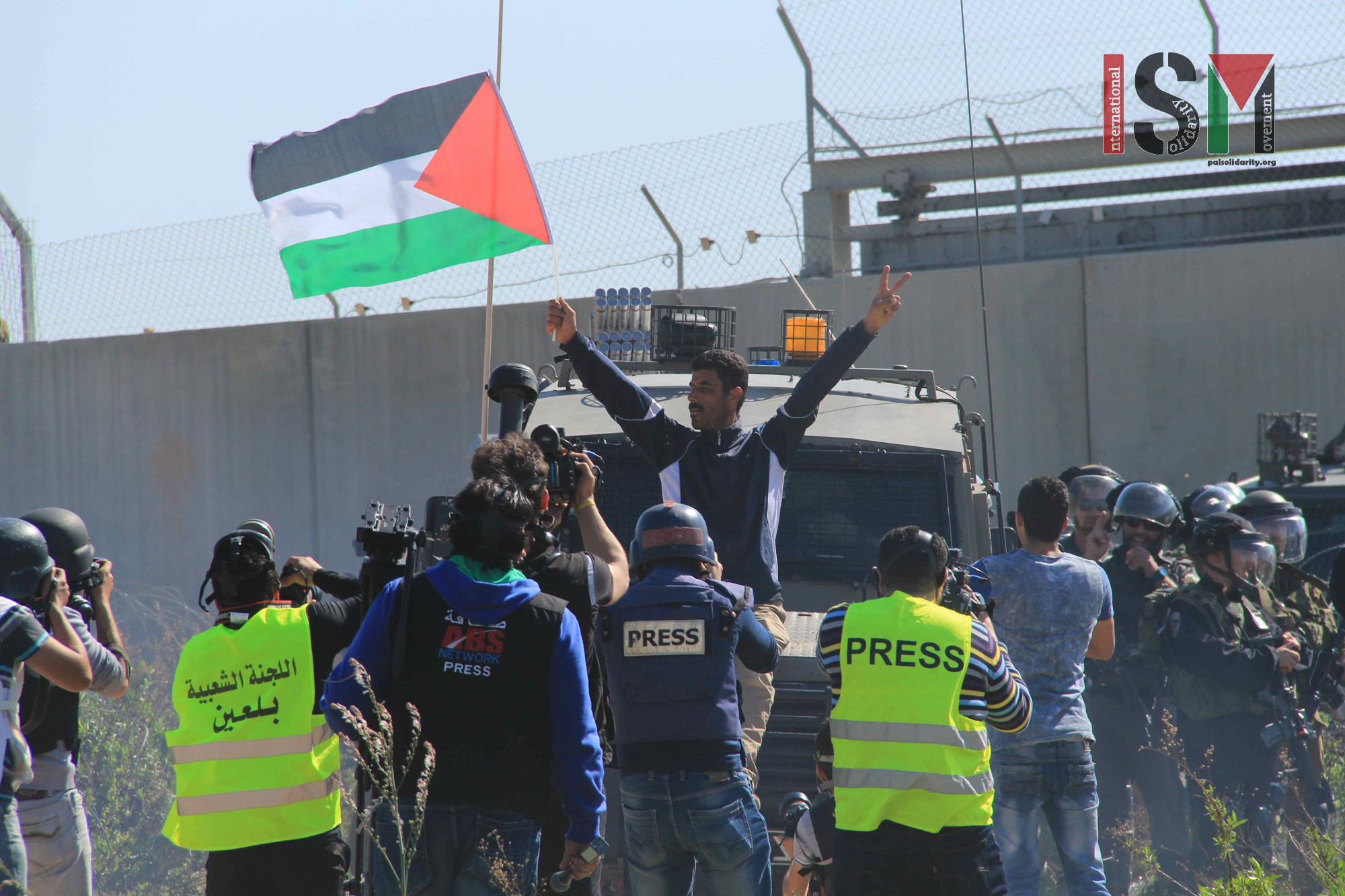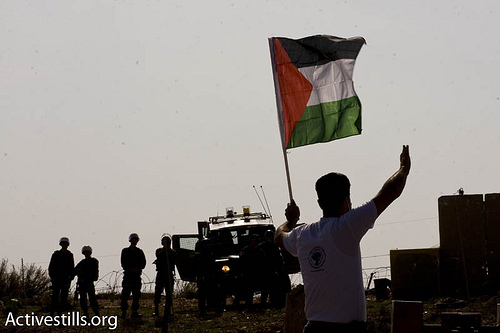Tag: Apartheid Wall
-
11th annual Bil’in demonstrations see protestors confront Israeli military at the apartheid wall
20th February 2015 | International Solidarity Movement, Al-Khalil team | Bi’lin, occupied Palestine On Friday the 20th of February, protesters took to the streets of Bil’in for the 11th consecutive year to demonstrate against the apartheid wall. Palestinians and international activists came together in solidarity to unite against the annexation wall which provides shelter for…
-
11 years of peaceful resistance in Bil’in
February 18th, 2016 | International Solidarity Movement, Ramallah team | Bil’in, occupied Palestine On Friday, February 19th, residents of the village of Bil’in will march to celebrate the 11th aniversary of the beginning of the weekly protest against occupation. The small village of inhabitants has for over a decade united Palestinians and internationals to support…
-
Support for political prisoner, Mohamad AlQueeq, after more than 70 days of hunger strike
4th Feburary 2016 | International Solidarity Movement, Gaza Team | Gaza, occupied Palestine Yesterday there were several events in Gaza supporting the Palestinian political prisoner Mohamed AlQeeq, who is actually in the 72nd day of hunger strike and has lost his sight and hearing. Moataz Dalul, spokesman for the prisoners, stressed that “Mohamed AlQeeq is…



